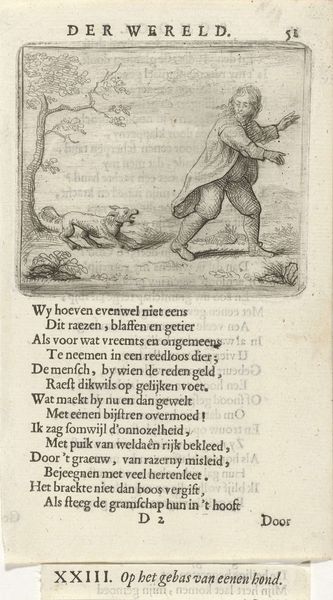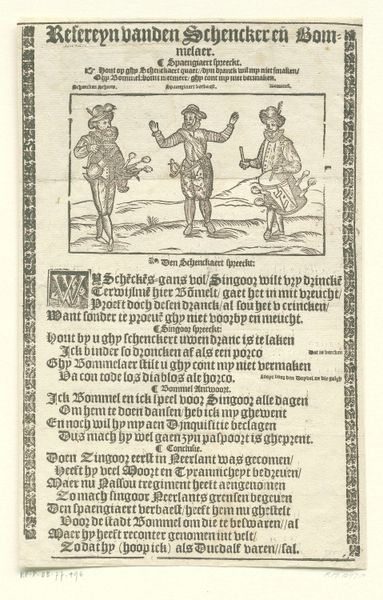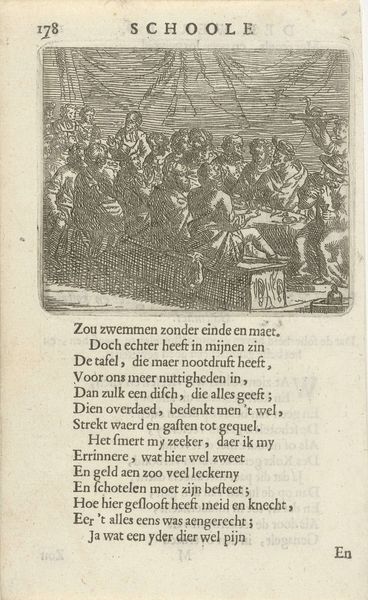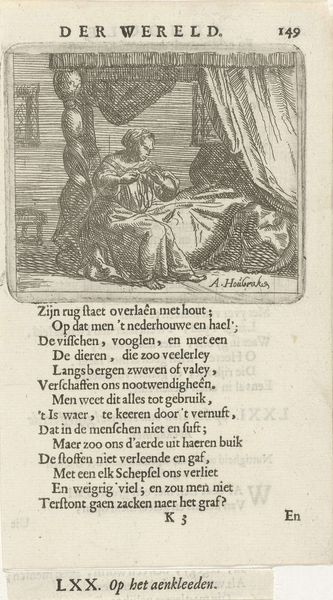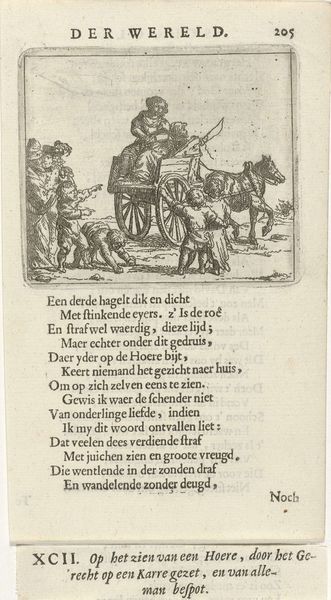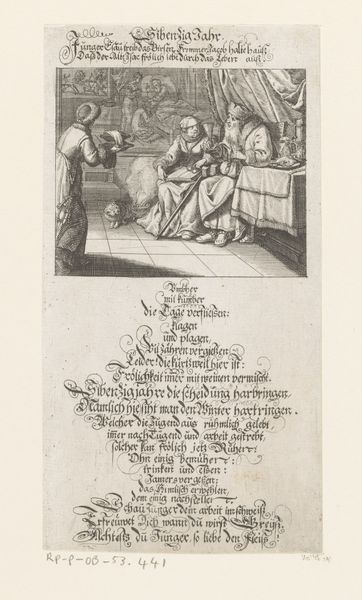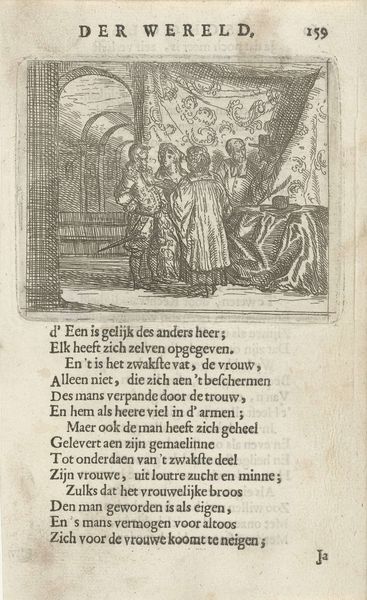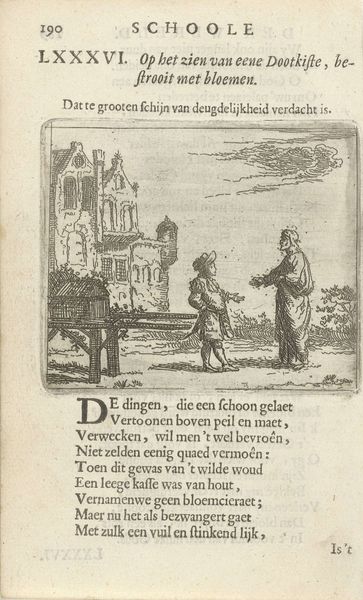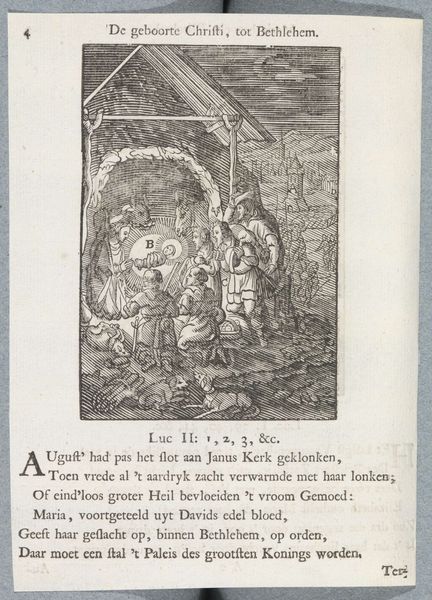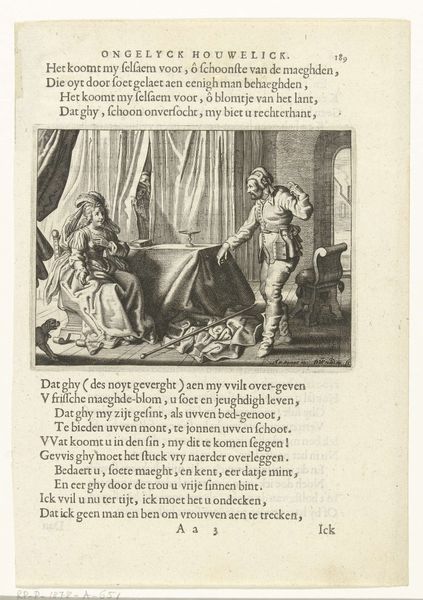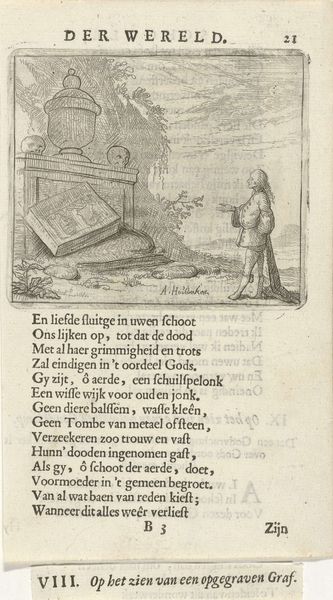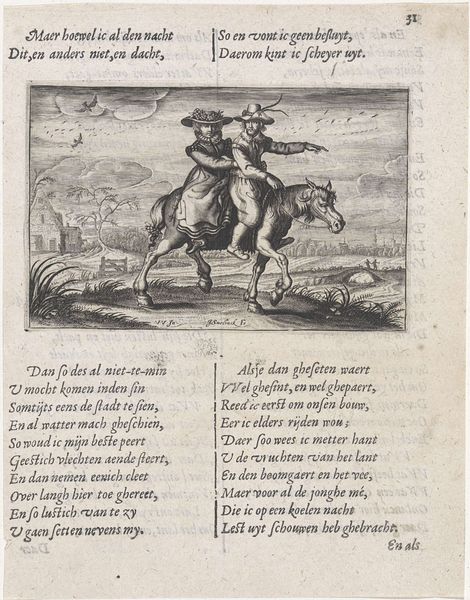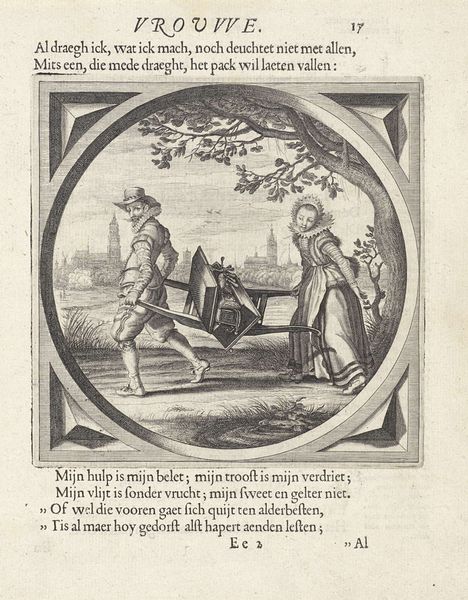
print, engraving
#
narrative-art
#
baroque
# print
#
figuration
#
genre-painting
#
engraving
Dimensions: height 74 mm, width 83 mm, height 158 mm, width 99 mm
Copyright: Rijks Museum: Open Domain
Curator: Looking at this engraving, I am immediately struck by the almost theatrical quality of the scene. The contrast between the two figures, in terms of both their posture and clothing, tells a clear story, doesn’t it? Editor: Absolutely. There’s a stark contrast at play. We're looking at "Kneeling Man Before a Richly Dressed Figure" created in 1682 by Arnold Houbraken. One figure, finely dressed and upright, is placed in opposition with another on his knees. The kneeling man looks almost haggard and worn next to his well-appointed counterpart. It speaks to a definite power dynamic. I find the somewhat crudely drawn tree behind the kneeling figure a particularly compelling choice. Curator: The tree definitely adds an interesting layer, creating an outdoor space. This piece utilizes Baroque stylistic conventions, though maybe a bit less grandiose than we often expect. Baroque printmaking often depicts theatrical and emotive narratives. The artist uses fine lines to describe textures, especially in the clothing of the standing figure. Does this depiction present to you the same kind of social critique it suggests to me? Editor: Undeniably. Works like this remind us that art in this period wasn't always about glorifying the powerful. Prints, especially, circulated more widely and could serve as a form of social commentary. This piece invites questions: Who are these men? What led to this moment of supplication? Is it genuine humility or forced subservience? Also, consider the setting: Placing this encounter under the indifferent gaze of nature enhances that sense of detachment. There is also accompanying text—likely moralistic commentary intended to drive home its message to a wider audience, very accessible and unpretentious! Curator: That's very true. The added text serves to reinforce or perhaps steer the viewer's interpretation, reminding us of the layered meanings that could be embedded in even seemingly straightforward images during that period. It's not just about artistry but about communication and persuasion, which seems more immediate as it addresses "us" more directly. The engraving definitely offers us a view of social structures through a didactic lens. Editor: Considering today’s social dynamics, what would our interpretation be? It also brings forth complex socio-political dimensions in imagery, underscoring how these historical artworks reflect and shaped their cultural landscape and continues to resonate.
Comments
No comments
Be the first to comment and join the conversation on the ultimate creative platform.
